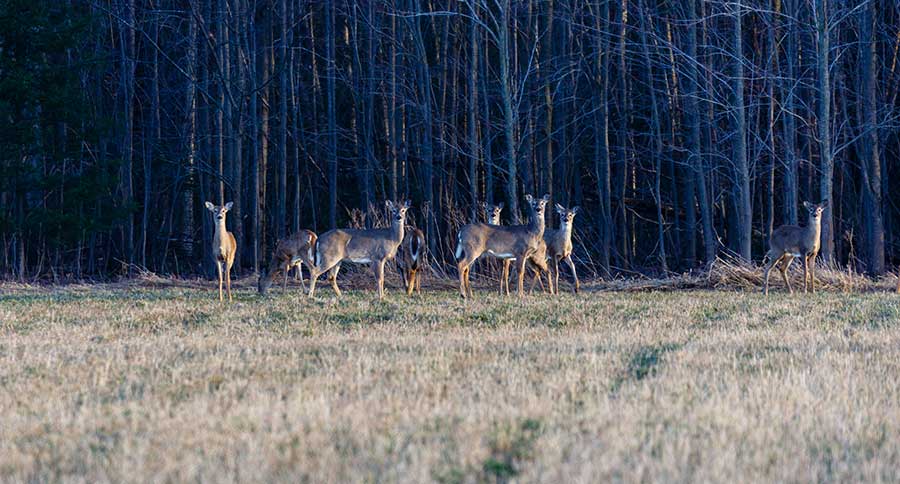The CDC found that a case in Michigan led to tuberculosis in deer getting transmitted to a human.
As deer hunting seasons begin across the U.S., a new report from the Centers for Disease Control and Prevention (CDC) found that deer with tuberculosis can transmit the disease to humans.
As a result, the CDC is advising hunters to use "personal protective equipment while field-dressing deer" and that hunters in Michigan take extra precautions if they submit a deer for testing and it comes back TB-positive.
A recent study reveled the case of a 77-year-old Michigan man from the northeastern Lower Peninsula who was diagnosed with pulmonary tuberculosis (TB) caused by Mycobacterium bovis (M. bovis).
The CDC report states that the man was a consistent hunter for two decades, and had regularly harvested, field dressed, and consumed deer meat. It's believed he inhaled the bacteria and it affected his respiratory system.
The region he hunted is included in the four-county section of the state with the majority of M. bovis-positive deer cases in Michigan. The subject had no history of travel to countries with history of tuberculosis or contact with people known to be TB-positive.
M. bovis is typically found in deer, cattle, bison, and elk and causes less than 2% of the total number of tuberculosis cases in the United States.
The CDC study mentioned two other TB cases believed to be hunting-related in Michigan, in 2002 and 2004. So far, Michigan and Minnesota are the only states to have found TB-positive wildlife populations.
Can humans get bovine tuberculosis from deer?
It would appear, at least in this case, that the answer is yes. The CDC takes studies seriously, but even the most scientific research can have holes poked through it.
Nonetheless, using protective equipment like gloves, a face mask, and glasses should be a relatively simple addition to your field dressing and butchering technique, if it isn't included already.
Wild deer are susceptible to wildlife disease, and news like this is likely to get some folks to take that fact more seriously.
FOX 17 in Nashville got the perspective of Tennessee Wildlife Resources Agency (TWRA) Wildlife Veterinarian Dan Grove, who said "The advice is sound in general. If it looks like there is an abscess in a piece of meat then you want to avoid it. You always want to be cautious handling meat until you cook it and take basic precautions like wearing gloves. Sometimes everything looks good but you might get into dressing the animal and see something."
What does tuberculosis in deer look like?
Usually, TB is evident in a deer's lymph nodes, which show signs of infection like bloat and discoloration first. Know where to locate and inspect a lymph node on a deer, and you're taking a significant step towards early detection and avoidance of possible transmission.
M. bovis is further recognized by notable legions in the chest cavity or lungs. They often take the form of yellow lumps on the inside of the rib cage and on the lung tissue. For seasoned deer hunters familiar with a normal deer, they're almost instantly recognizable as unusual.
The infectious disease may not always be easy to detect in free-ranging animals, especially if you're less familiar with the specific deer herd, or the anatomy of certain cervids.
The Michigan Department of Natural Resources has more information on tuberculosis in deer on their website.
NEXT: WATCH THIS GUY BONE OUT A DEER IN 6 MINUTES
WATCH




